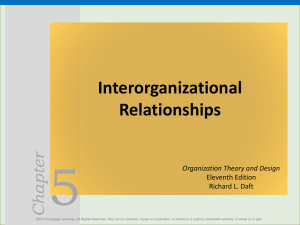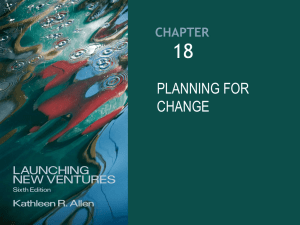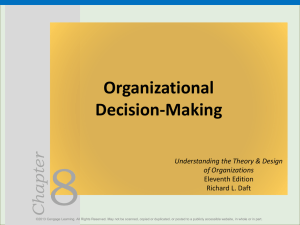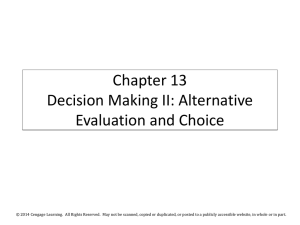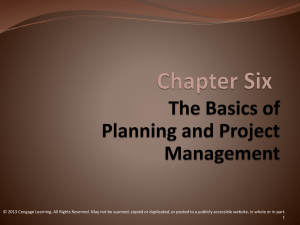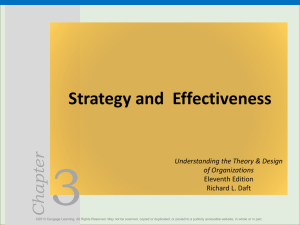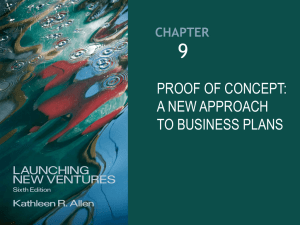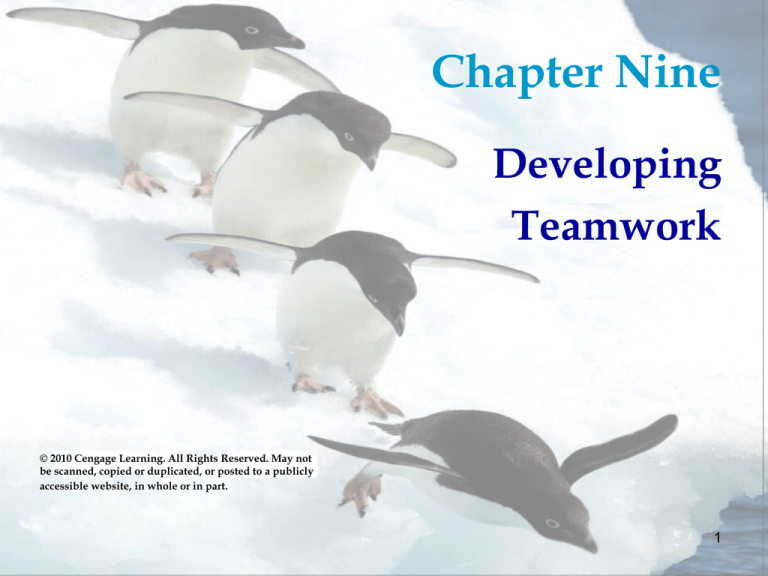
Chapter Nine
Developing
Teamwork
© 2010 Cengage Learning. All Rights Reserved. May not
be scanned, copied or duplicated, or posted to a publicly
accessible website, in whole or in part.
1
Learning Objectives
Understand the leader’s role in a teambased organization.
Describe leader actions that foster
teamwork.
Explain the potential contribution of
outdoor training to the development of
team leadership.
Describe how the leader-member
exchange model contributes to an
understanding of leadership.
© 2010 Cengage Learning. All Rights Reserved. May not be scanned, copied
or duplicated, or posted to a publicly accessible website, in whole or in part.
2
Teams, Teamwork, and Groups
A team is a work group that must rely on
collaboration if each member is to
experience the optimum success and
achievement
Teamwork is done with an understanding
and commitment to group goals on the
part of all team members
All teams are groups, but not all groups
are teams
© 2010 Cengage Learning. All Rights Reserved. May not be scanned, copied
or duplicated, or posted to a publicly accessible website, in whole or in part.
3
Roles of a Leader in the
Team-Based Organization
Building trust and inspiring
teamwork
Coaching team members and group
members toward higher levels of
performance
Facilitating and supporting team’s
decisions
Expanding the team’s capabilities
Creating a team identity
© 2010 Cengage Learning. All Rights Reserved. May not be scanned, copied
or duplicated, or posted to a publicly accessible website, in whole or in part.
4
Roles of the Leader in the
Team-Based Organization (cont’d)
Anticipating and influencing change
Inspiring the team toward higher
levels of performance
Enabling and empowering group
members to accomplish their work
Encouraging team members to
eliminate low-value work
© 2010 Cengage Learning. All Rights Reserved. May not be scanned, copied
or duplicated, or posted to a publicly accessible website, in whole or in part.
5
11 Leader Actions That Foster
Teamwork (using own resources)
1. Defining the team’s mission
2. Establishing a climate of trust
3. Developing a norm of teamwork,
including emotional intelligence
4. Emphasizing pride in being
outstanding
5. Serving as a model of teamwork,6.
including power sharing
6. Using a consensus leadership style
© 2010 Cengage Learning. All Rights Reserved. May not be scanned, copied
or duplicated, or posted to a publicly accessible website, in whole or in part.
6
11 Leader Actions That Foster
Teamwork (cont’d)
7. Establishing urgency, demanding
performance standards, and
providing direction
8. Encouraging competition with
another group
9. Encouraging the use of jargon
10.Minimizing micromanaging
11. Practicing e-leadership
© 2010 Cengage Learning. All Rights Reserved. May not be scanned, copied
or duplicated, or posted to a publicly accessible website, in whole or in part.
7
6 Leader Actions Requiring
Org. Structure or Policy
1. Designing physical structures that
facilitate communication
2. Emphasizing group recognition and
rewards
3. Initiating ritual and ceremony
4. Practicing open-book management
5. Selecting team-oriented members
6. Using technology that facilitates
teamwork
© 2010 Cengage Learning. All Rights Reserved. May not be scanned, copied
or duplicated, or posted to a publicly accessible website, in whole or in part.
8
Open-Book Management
In open-book management every
employee is trained, empowered, and
motivated to understand and pursue
the company’s business goals.
Employees become business
partners and perceive themselves to
be members of the same team.
© 2010 Cengage Learning. All Rights Reserved. May not be scanned, copied
or duplicated, or posted to a publicly accessible website, in whole or in part.
9
Cooperation Theory
… a belief in cooperation and
collaboration rather than
competitiveness as a strategy
for building teamwork.
© 2010 Cengage Learning. All Rights Reserved. May not be scanned, copied
or duplicated, or posted to a publicly accessible website, in whole or in part.
10
Outdoor Training and
Team Development
Outdoor training is a form of
learning by doing
Participants acquire leadership and
teamwork skills by confronting
physical challenges and exceeding
self-imposed limitations
© 2010 Cengage Learning. All Rights Reserved. May not be scanned, copied
or duplicated, or posted to a publicly accessible website, in whole or in part.
11
Outdoor and Outside Training (cont’d)
Outward Bound is a well-known and
popular organization that uses the
wilderness as the classroom:
Kayaking, canoeing, sailing
Mountaineering, hiking, backpacking
Dog-sledding, horseback riding, cycling
Other programs are appearing: circus
camp, gourmet cooking, paintball,
scavenger hunts, charity work
© 2010 Cengage Learning. All Rights Reserved. May not be scanned, copied
or duplicated, or posted to a publicly accessible website, in whole or in part.
12
Evaluation of Outdoor Training
Pros include the perception that trust,
cooperation, communication, selfconfidence, and teamwork improve with
outdoor training
Cons include the perception that team
members revert to old behaviors over
time, team members come and go,
thereby diluting the experience for their
group, and team members are sometimes
exposed to harm or injury
© 2010 Cengage Learning. All Rights Reserved. May not be scanned, copied
or duplicated, or posted to a publicly accessible website, in whole or in part.
13
The Leader-Member Exchange
Model (LMX)
Proposes that leaders develop
unique work relationships with
group members
Two subsets of employees result:
The in-group is given additional rewards,
responsibility, and trust in exchange for
their loyalty and performance
The out-group members are treated in
accordance with a more formal
understanding of leader-member
relations
© 2010 Cengage Learning. All Rights Reserved. May not be scanned, copied
or duplicated, or posted to a publicly accessible website, in whole or in part.
14
Figure 9-1 The Leader-Member
Exchange Model
© 2010 Cengage Learning. All Rights Reserved. May not be scanned, copied
or duplicated, or posted to a publicly accessible website, in whole or in part.
15
Summary
Teamwork is an understanding of
and commitment to group goals on
the part of all group members
Leaders must occupy many roles
and employ many strategies
(actions) to be an effective team
builder
© 2010 Cengage Learning. All Rights Reserved. May not be scanned, copied
or duplicated, or posted to a publicly accessible website, in whole or in part.
16
Summary (cont’d)
How leaders can improve teamwork
include 1) actions using leaders’
own resources and 2) actions that
rely on organizational structure or
policy
Outdoor training is a popular
experiential approach to enhance
teamwork; however, opinions about
its effectiveness are mixed
© 2010 Cengage Learning. All Rights Reserved. May not be scanned, copied
or duplicated, or posted to a publicly accessible website, in whole or in part.
17
Summary (cont’d)
According to the leader-member
exchange model, leaders develop unique
relationships with group members that
result in an in-group and an out-group
The leader’s first impression of a group
member’s competency plays an important
role in placing that person into the ingroup or the out-group
© 2010 Cengage Learning. All Rights Reserved. May not be scanned, copied
or duplicated, or posted to a publicly accessible website, in whole or in part.
18


